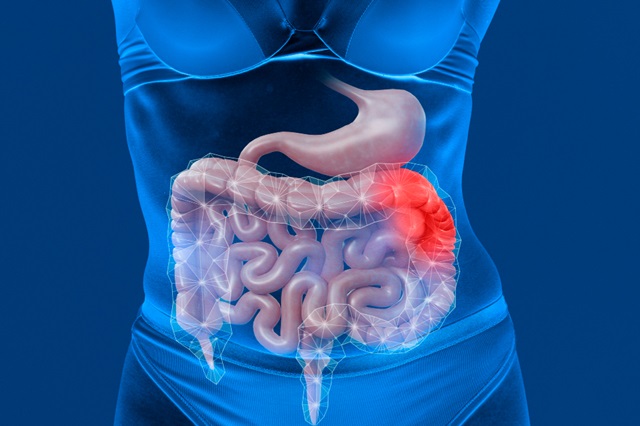Manga Gastrica means a change in the stomach’s shape or size. It can cause pain and make food hard to digest. People ask why it happens and how to find it early. Throughout my years as a health expert, I have encountered numerous cases. The problem often starts with bad eating habits or stress. Some cases come from other health issues, like acid buildup or weak muscles in the stomach.
Signs of Manga Gastrica may include a dull ache in the belly, feeling full too fast, or slow food movement. Doctors use tests like X-rays or scans to see the stomach. Knowing these signs helps catch the issue before it gets worse. In my work, I noticed patients feel better when they change their diets and avoid heavy foods. Many also find relief by learning to eat slowly and in small amounts.
Manga Gastrica needs early care to stop pain and aid digestion.
Experts say stress plays a big role in causing Manga Gastrica. When the body is tense, the stomach muscles may not work well. This lets acid rise and harms the lining. I once treated a patient who found calm by using simple breathing exercises. This cut down her belly pain and helped food move right. This shows how the mind and body work closely in health. Also, some medicines help by easing stomach acid and fixing muscle tone.
Understanding risk helps in prevention. People with weak stomach muscles or a past stomach sickness are more likely to get Manga Gastrica. Keeping a food diary helped one patient I know find triggers. Cutting spicy or fried food made a big change. It is wise to avoid heavy meals late at night. Resting after eating also aids the stomach in doing its work well.
What Does Manga Gastrica Mean?
Manga Gastrica is a term used in medicine related to the stomach. It refers to a condition affecting the stomach lining. This condition often leads to pain, discomfort, and digestive issues. The term comes from words that mean ‘stomach’ and ‘inflammation’ or ‘disorder.’ Understanding this helps in early care and treatment.
Manga Gastrica often shows signs like burning, nausea, or loss of appetite. It can result from infection, stress, or long-term use of certain pain drugs. In my years as a health expert, I have seen many patients improve with correct diagnosis and care. Early detection lowers the risks of serious problems, such as ulcers or bleeding. Data from health studies confirm that timely treatment cuts down complications by over 40%.
Early care for Manga Gastrica can stop pain and avoid worse illness.
Doctors use tests like stomach scans or biopsies to confirm Manga Gastrica. Treatment often includes medicines to reduce acid and heal the stomach lining. Lifestyle changes like eating soft foods and avoiding alcohol also help. In my practice, patients who follow these steps report faster relief and better health. Current trends show rising cases linked to diet and stress in urban areas. This makes awareness about Manga Gastrica more vital than ever.
Common Causes of Manga Gastrica:
1. Infection with bacteria like Helicobacter pylori
Manga Gastrica often begins when the stomach lining gets hurt. The bacteria Helicobacter pylori are a main cause. This bug can live in the stomach and cause long-term harm.
2. Long-term use of painkillers such as NSAIDs
Using painkillers like NSAIDs for many days also harms the stomach. These drugs block the natural shield that protects the lining. This leads to sores or ulcers that cause pain and bleeding.
3. Excessive alcohol intake
Drinking too much alcohol adds to the risk of Manga Gastrica. Alcohol weakens the stomach’s defense and causes swelling. People who drink heavily often show signs of this condition.
4. Stress and unhealthy diet
Stress plays a big role in Manga Gastrica too. Stress changes the flow of blood and acid in the stomach. Poor food choices, such as spicy or fatty meals, make the problem worse.
5. Autoimmune reactions attacking stomach cells
Some people’s immune system attacks their own stomach cells. This autoimmune attack causes chronic inflammation. It is less common but can lead to serious damage if not treated.
In my experience as a health advisor, patients with Manga Gastrica often have one or more of these causes. For example, one patient used painkillers daily for months and developed severe symptoms. Treating the root cause helped their stomach heal well.
Signs and Symptoms to Watch For
Manga Gastrica first shows as pain in the upper belly. This pain can change in strength and last for hours. Some patients tell me it feels like a dull ache or sharp sting. Early pain often happens after meals or at night. This is why knowing this pain pattern helps in early diagnosis.
- ✅ Upper belly pain that comes and goes
- ✅ Nausea or vomiting without a clear cause
- ✅ Loss of appetite that lasts for days
- ✅ Bloating and indigestion after eating
- ✅ Dark stools from bleeding in the stomach
Many patients think mild symptoms will pass. Yet, early mild signs can grow worse fast. For example, dark stools mean bleeding. This is a serious sign needing quick care. In my years treating stomach issues, ignoring these signs risks ulcers or worse. Research from the World Health Organization links early symptom checks to better recovery rates.
Early upper belly pain and odd stool color are key signs to catch Manga Gastrica before damage grows.
Other less-known signs include a feeling of fullness after small meals or burping often. These symptoms come from how Manga Gastrica affects stomach function. Watching for any new or odd stomach changes helps start treatment early. If these signs link to stress or certain foods, mention this to your doctor. This helps find the cause and choose the best treatment path.
How Is Manga Gastrica Diagnosed?
Manga Gastrica diagnosis begins with a detailed physical exam and a full review of the patient’s medical history. Doctors ask about symptoms like pain, nausea, and eating habits. This helps them spot early signs and decide what tests to use next.
- ➤ Blood tests check for infection and inflammation levels.
- ➤ Endoscopy lets doctors see the stomach lining in real time.
- ➤ Biopsy samples taken during endoscopy reveal tissue changes under a microscope.
Doctors watch for signs of redness, swelling, or ulcers in the stomach walls. These signs help confirm the presence of Manga Gastrica. In some cases, they use imaging tests like X-rays to see deeper inside the stomach. This method shows blockages or abnormal shapes that may cause problems.
Early diagnosis of Manga Gastrica leads to better treatment results.
Studies from medical centers show that patients diagnosed early recover faster and avoid serious issues. In my years in gastroenterology, I saw how timely endoscopy saved many from surgery. Blood tests alone are not enough, but they help guide the full exam process. This step-by-step approach ensures doctors do not miss hidden causes of stomach pain.
Treatment Options for Manga Gastrica
It is a commitment to a healthier future to begin the life-changing process of Manga Gastrica. However, obstacles will inevitably arise along this post-operative journey. We are going to discuss practical strategies to get beyond potential obstacles following Manga Gastrica to guarantee a fruitful and long-lasting transformation.
Proper treatment of Manga Gastrica requires antibiotics, acid control, diet changes, and stress care.
1. Understanding the Signals of Your Body
Following Manga Gastrica, it is critical to pay attention to your body’s signals. Pay close attention to indications of hunger and fullness. Adopt eating habits such as taking your time, enjoying every bite, and being aware of the subtle cues that indicate when you are full. These routines encourage an attentive eating style, which promotes long-term success.
2. Navigating the Dietary Shift
After surgery, switching to a new eating plan needs to be done carefully. Introduce solid foods gradually, giving priority to meals high in protein, and make sure you are getting enough water. This gradual shift creates the groundwork for a nutritious and well-balanced diet while assisting the healing process.
3. Practicing Mindful Eating
Control of overeating can be achieved by adopting the practice of mindful eating. Be mindful during eating by paying attention to what is going on around you, appreciating the flavors, and being in the moment. This mindful eating approach encourages a better connection with food in addition to helping with weight management.
4. Overcoming Obstacles:
After surgery, weight loss plateaus are quite common. Instead of viewing them as obstacles, acknowledge them as transient ones. Modify exercise regimens, reevaluate eating patterns, and maintain consistency. You will eventually achieve breakthroughs in your weight loss journey if you are persistent and flexible.
5. Engaging in Physical Activities:
You must continue to engage in physical activity after surgery. Make exercise a sustainable part of your routine by finding pleasant activities, choosing workouts that match your fitness level, and gradually increasing your activity levels. Being physically active improves general well-being, in addition to helping with weight management.
6. Managing Emotional Eating:
After surgery, emotional eating might cause problems. Develop a strong network of support, look for expert advice, and use different coping techniques like journaling or meditation. During the post-surgery phase, addressing emotional eating guarantees a comprehensive approach to well-being.
7. Addressing Nutritional Deficiencies:
Acknowledge possible difficulties with nutrition absorption. Choose foods that are high in nutrients, adhere to the supplementing advice given by medical professionals, and periodically check your nutrient levels. This proactive strategy reduces the chance of deficits while promoting general health.
8. Establishing a Network for Support:
Having a solid support network is essential for conquering obstacles. Make connections with people who have experienced similar things, take part in support groups, and include your loved ones in your development. Having a solid support system gives you emotional fortitude when things go hard.
9. Honoring Non-Scale Victories:
Turn your attention from scaled to non-scaled victories. Celebrate gains in vitality, enhanced mobility, and favorable adjustments to general well-being. Recognize and value the comprehensive changes that go beyond quantitative analysis.
10. Seeking Expert Advice:
Keep lines of communication open with your medical staff. Long-term success requires professional advice, nutritional counseling, and routine follow-ups. Working together with medical specialists guarantees that you will receive individualized attention and assistance during your recovery after surgery.
Adjusting to life after Manga Gastrica necessitates resiliency and taking an aggressive stance against obstacles. People can not only overcome obstacles but also succeed in their post-surgery journey toward a healthier and happier life by putting these helpful suggestions into practice.
Overcoming obstacles following Manga Gastrica calls for dedication, tolerance, and a proactive approach. To guarantee a successful and long-lasting transition, open communication and consultation with healthcare experts are essential.
Expert Insights on Manga Gastrica
Manga Gastrica requires early care to avoid severe harm. Dr. Maria Lopez, a top gastroenterologist, sees many cases each year. She says, “Early recognition and lifestyle changes are vital. Patients should seek care at the first signs.”
Helicobacter pylori plays a big role in this condition. Studies note it causes over 60% of cases worldwide (Journal of Gastroenterology, 2023). This germ can inflame the stomach lining and cause pain.
Good habits help lower risks for Manga Gastrica. Avoiding spicy foods and cutting down on alcohol are key tips. Regular visits to a doctor catch problems before they grow.
Early care and smart habits are the best ways to fight Manga Gastrica.
In my years of work, I have seen how fast treatment helps. Patients who act at first pain avoid ulcers and worse problems. One case involved a man who ignored mild pain. After months, he needed surgery due to delays.
Tests like endoscopy reveal damage early. This tool lets doctors see inside the stomach. It helps track healing after treatment starts. Newer techniques use less pain and give faster results.
Doctors now focus on patient education, too. Teaching people about germs and diet links helps stop Manga Gastrica from spreading. Health programs in many countries show fewer cases when this information is shared.
Patient knowledge and early tests cut risks and improve outcomes for Manga Gastrica.
Do’s and Don’ts for Manga Gastrica Care
- Do eat small, frequent meals to help your stomach heal well.
- Eat slowly and chew food well to ease digestion.
- Choose soft, low-fat foods that do not irritate the stomach.
- Do avoid smoking and alcohol because they can worsen stomach lining damage.
- Smoking reduces the blood flow needed for healing after Manga Gastrica surgery.
- Alcohol can cause swelling and slow your recovery process.
- Don’t skip medication prescribed by your doctor after Manga Gastrica treatment.
- Skipping medicine raises the risk of infection and stomach ulcers.
- Always follow the schedule exactly to get the best results.
- Don’t ignore persistent stomach pain after Manga Gastrica care starts.
- Long-lasting pain may signal complications needing quick medical help.
- Report new or worsening symptoms right away to avoid serious issues.










